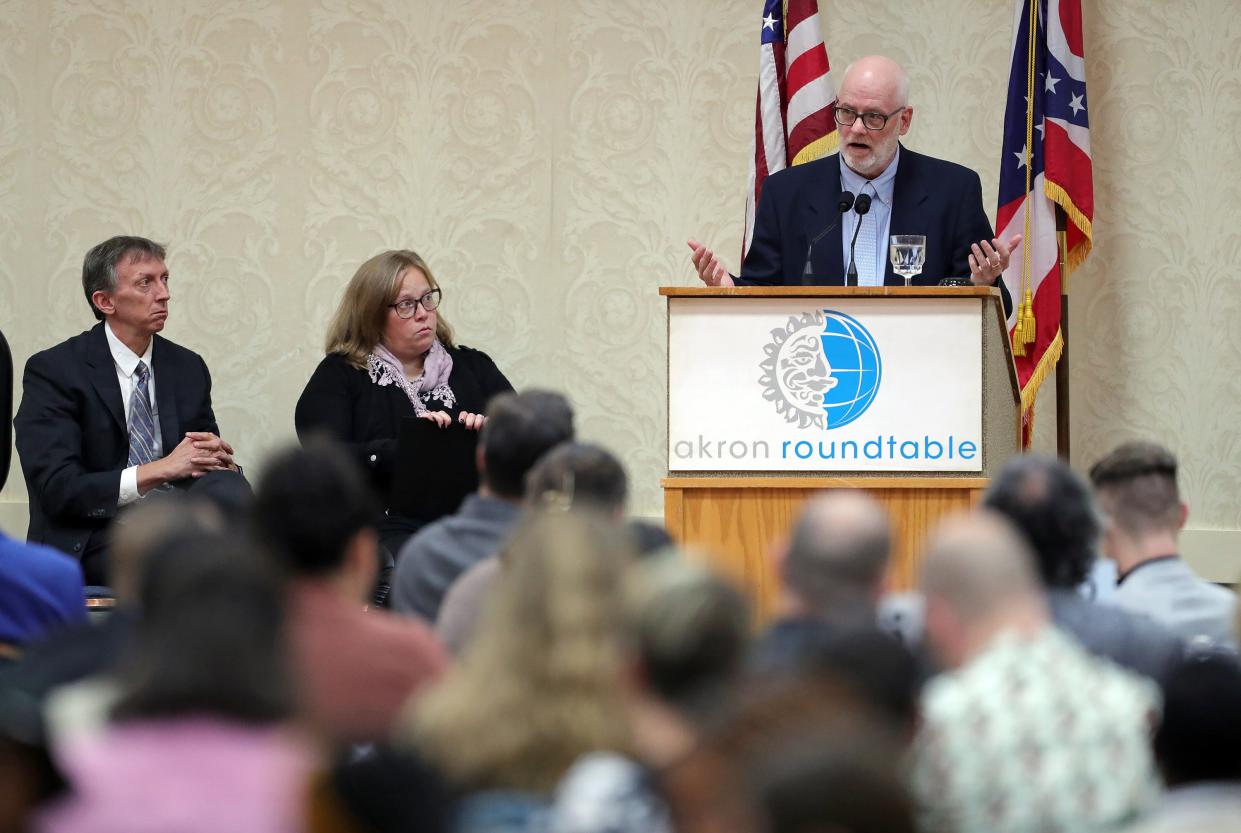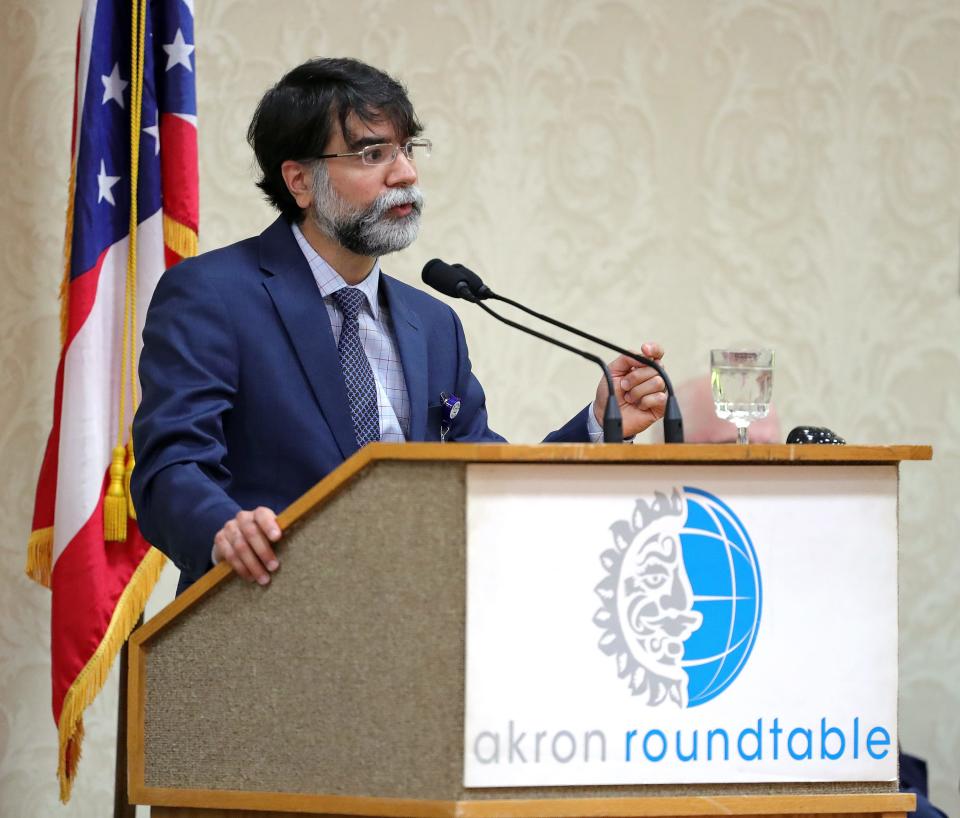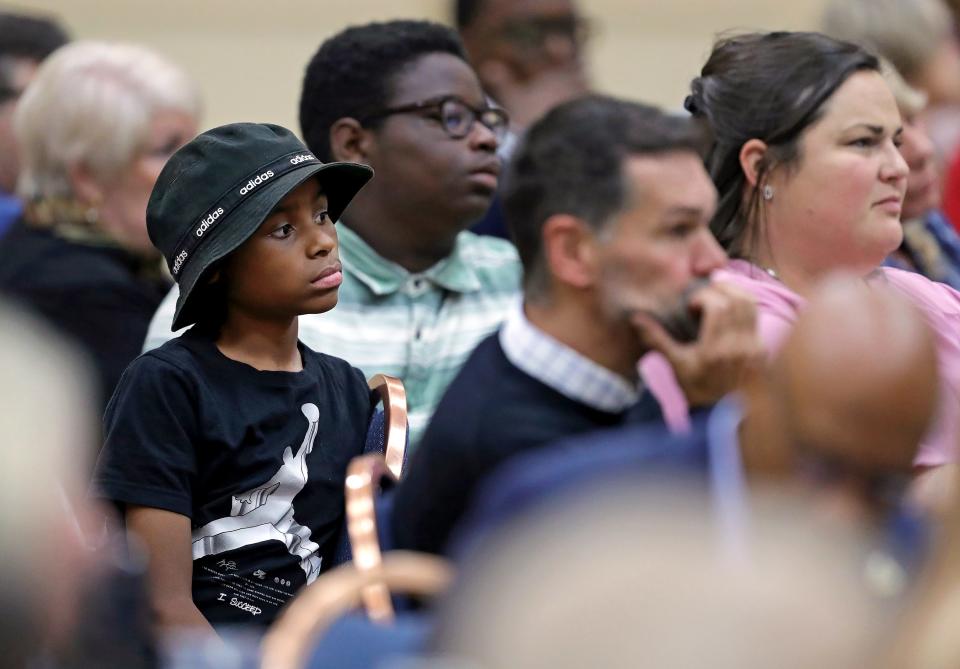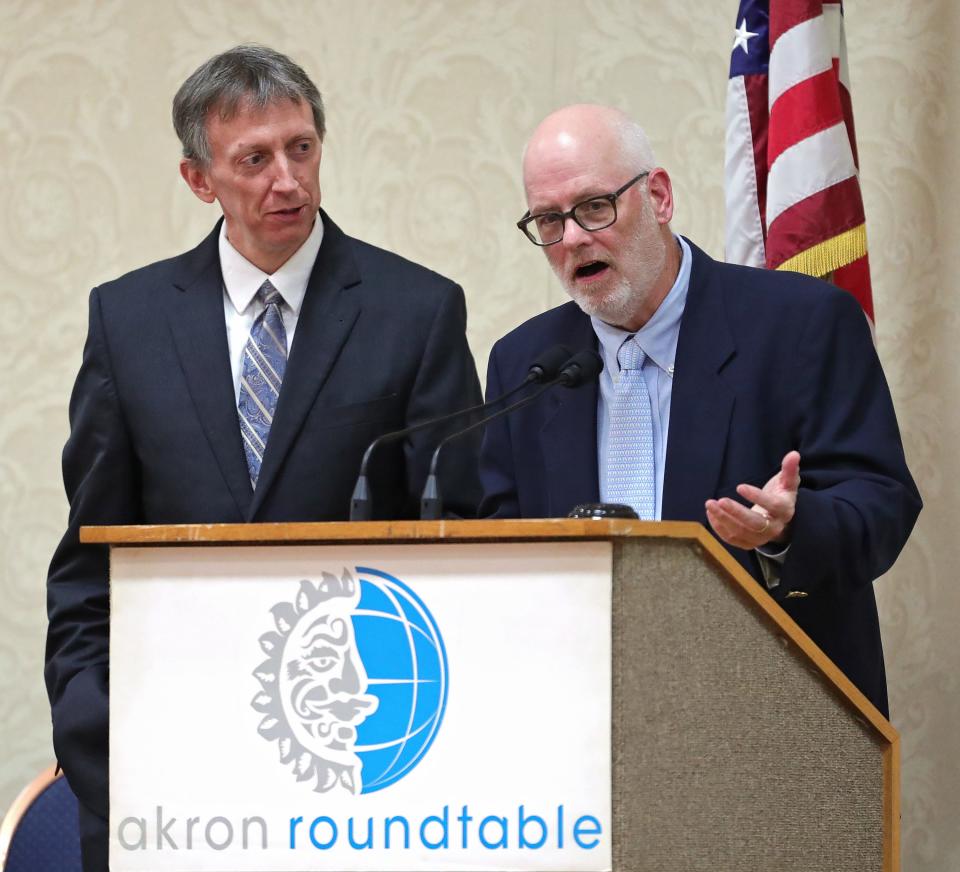Schools, communities are key to reducing youth gun violence, Akron Roundtable speaker says

Communities seeking to curb gun violence among young people must be willing to commit to long-term strategies and avoid the pitfalls of fruitless approaches, a Northeast Ohio expert on the topic told an Akron Roundtable audience Thursday.
Daniel J. Flannery, director of the Begun Center for Violence Prevention Research and Education at Case Western Reserve University, emphasized that the most effective ways to help at-risk youths are to provide resources during the school day as well as in the hours immediately following dismissal, when studies show must juvenile gun incidents occur.
What works?
Flannery said some of the best approaches include having mental health services readily available to kids at school, youth development and threat-assessment programs, a 24-hour crisis tip-line, and making sure community leaders are listening to youth voices.
What doesn't work?
Zero-tolerance policies that remove kids from schools, focusing on policing, juvenile curfews and policymaking without community input, Flannery said, are response tactics that do not solve problems.
"Just kicking a kid out of school or suspending them is not an effective strategy over time, especially when we suspend them to nothing, without any sort of support," Flannery said. "If zero tolerance is your school's discipline policy and nothing else, then I would encourage you to reconsider that position."
Gun violence has gripped the Akron area recently, coming to a head in August when a 16-year-old boy allegedly fired a gun in a a crowd gathered at a Pee Wee football game at Lane Field, striking a 7-year-old boy.
"There should be very little doubt that gun violence is a public health crisis," said Dr. Daniel Vazquez, a trauma surgeon at Cleveland Clinic Akron General, during introductory remarks Thursday. "It should be treated as such with prevention, with intervention and wraparound services. Violence can reach every single one of us either directly or indirectly."
And among youths, Flannery said, that violence is most likely to occur between 4-7 p.m., right after school has let out for the day and most kids are hanging out with their friends, unsupervised.
In Akron, Flannery said, reports of shots fired increased almost 50% from 2017 to 2021.
"During that same period, youth violence and crime data in the city of Akron shows an increase of 17% in weapon law violations, an increase of 21% in menacing and aggravated menacing, and as we've seen in Cleveland, an increase in carjackings that involve guns."

Vazquez said the individual stories behind such statistics are especially unsettling; every day, he said, he knows he may confront the consequences of gun violence on the job. The emotional toll of one episode in particular, he said, brought him close to giving up surgery.
"I once received a 16-year-old pregnant mother who had been shot in the abdomen. I quickly took her to the operating room and while treating her wounds realized that a bullet had pierced her uterus," Vazquez said. "Being a man who doesn't practice any specific religion, all I could do is pray to God that the projectile had not injured the baby."
The baby and the mother both survived, much to Vazquez's relief.
Gun violence hospitalizations: Akron’s 3 hospitals seek solutions to city’s gun violence problem
Working with communities to bring change
Flannery said the Begun Center's mission goes beyond traditional research; it establishes partnerships with schools and mental health agencies to try to bring about change.
Akron gun violence overview: Akron in the Crossfire: Data shows grim picture of growing gun violence
"We are mostly embedded with our community partners; we are not just looking at big data and just sitting in front of the computer," Flannery said. "We understand violent behavior involves many different layers and systems, and we work from a variety of perspectives and disciplinary outlooks with a variety of partners."
Those partners also include law enforcement, Flannery said — ties that some groups who work with the center don't like, but are needed nonetheless for any kind of progress to occur.

"It's important to try and affect change from within systems than just complain about them from without," Flannery said.
To demonstrate how rampant youth gun violence has gotten in the past few decades, he cited a recent Boston Children's Hospital study that showed an 87% increase in U.S. juvenile gun deaths from 2011 to 2021.
He said several factors have fed the increase in juvenile gun crimes, including the availability of assault weapons; adolescent reports of anxiety, depression and difficulty coping with trauma; the rise of cyberbullying and being desensitized to violence portrayed on social media; and truancy and students missing out on school.
Akron teens on gun violence: 'Every time I go to sleep I cry': Akron teens intimately discuss gun violence and grief

Some prevention strategies have mixed results
Some strategies to curb youth violence have yielded mixed results, Flannery said, including arming teachers, policing hot spots, utilizing school resource officers and tracking gunshots using technology.
He said the primary issue with arming teachers is that putting more guns into schools typically creates more potential for problems.
"God forbid an incident occurs" when a teacher with a weapon is mistaken for a perpetrator by a first responder, Flannery said. "There's no ability to sort that out quickly."
Gunshot detection technology that uses sensors and software to locate gunfire has had mixed results as well, he said, because of false positives and the lack of available police officers to respond to every flagged incident.
One of the most essential steps toward reducing violence, he said, is working to make school "a warm and welcoming safe space" free of bullying.
"Whether we like it or not, schools are our mechanisms for change and where most of the young people are spending considerable amounts of their day," Flannery said. "Focusing on school climate and culture to me is a big win, but it's a long-term win and not a short-term strategy."
The Akron Roundtable program will air at 8 p.m. Oct. 26 on Ideastream WKSU 89.7-FM.
Reporter Anthony Thompson can be reached at ajthompson@gannett.com, or on X @athompsonABJ
This article originally appeared on Akron Beacon Journal: Akron Roundtable focuses on youth gun violence, strategies to stop it

